Spring precipitates into summer and we can easily recognize the longest day of the year by how we measure time in our hurried lives. Spring or Summer Azure Celastrina ladon, Form violacea (and others)is another matter . . . as the butterflies are difficult to identify.
The more experienced butterfly watchers of the invaluableMassachusetts Butterfly Club kindly share their knowledge and determine the butterflies below to be Summer Azures . . . and perfect for a Summer Solstice entry, though these jewels were eyed on June 18th. Butterflies do not adhere to our calendar ways. I have counted nearly thirty filling the gardens each day for the last couple of days, only today, looking out from where I write to the swath of lace-like blossoms, it is quiet.
This Summer Azure is as lovely as its name . . . with wings sometimes spreading into a dreamy blue. Its wing span is only 3/4 – 1 1/4″. They are so small and from a distance seem so blah or simple white that I may have seen them for many years without really taking notice. I did capture one last year in late summer but missed the flurry . . . if there was one . . . over the blankets of blooming goutweed . . . as there is this spring . . . now summer.
These beauties only live for a few days with new butterflies emerging daily varying from two separate broods. Spring and Summer Azures are seen flying in plentiful numbers from April into May and then within June and July. They may be sighted flying into September in lesser numbers. I hope that many can survive their two or three days here, but I fear for them with all the birds, who have little nestlings and fledglings to feed.
These tiny fresh butterflies flit about in erratic and quick gestures (evolved that way to evade the birds no doubt) above and through the plants and shrubberies until they settle down to feed in earnest, upon, of all things, bishops weed. There amongst hundreds of every sort of bee, they hold their own dipping into teeny florets and allowing this butterfly lover and photographer a series of portraits. The earth is tilting towards our longest day and the Summer Azure above is about to fall off the flower.
Luckily for both the Summer Azure and this onlooker, the butterfly maintains its balance by opening breathtaking wings. We both stay on course . . . my clicking away while the butterfly continues to sip the nectar of the plant I so detest, though I confess to not minding it quite so much this day. Not one flower will be allowed to develop seeds, however.
One is left on its own for awhile.
The two Summer Azures soon reunite and do not notice my intrusion. Note the lovely fringe along the edges of the wings . . . how perfect it is. These are such delicately created creatures.
Courting between male and female Spring and Summer Azures begins usually in the afternoon and may continue into the twilight hours. Though I have noted earlier wooing and pursuits too. Having such a brief time to be a butterfly a female will lay eggs on the same day she emerges.
Female Spring and Summer Azure butterflies fasten one egg at a time onto flower buds of many trees, shrubs and plants, including: cherry, oak, viburnum, honeysuckle, lupine, clover and more. I gladly offer flowers to their creation but then the birds have other needs for the hairy “slug-shaped” larva in colors of white, beige, pink and green with stripes down their sides.
Still, many caterpillars do survive the birds rigorous gleanings and form a symbiotic relationship with ants who ‘milk’ the mature caterpillars “seventh abdominal segment” for sweet honey dew nectar. Ants can be a mighty force against possible predation. Many of the chrysalises that overwinter here . . . hidden beneath litter on the ground or within tiny crevices . . . sleep throughout the cold months and then, with springs return, emerge as butterflies adding beauty and nourishment to our gardens and imaginations.
A different form of Spring or Summer Azure captured June 20th in the lower garden.Again, a favored nectar source is the invasive goutweed.
Sunlight coming through this Azure’s wings reveals a darker version.
As if dark clouds are floating in the blue sky . . . somewhat threatening . . . as the bird slashes along the edge of the upper wing.
The wings of each Spring and Summer Azure butterfly are uniquely sketched as are the days of our lives. The lines that join us and divide us will hopefully come together to preserve the treasures that make up our world and our very existence on it.
The earth wobbles and tilts in a more precarious mode these days. The signs are all there but leaders of the world and those that control them do not heed the warnings. On this Summer Solstice Day I long for a saner world that might look more to the wonders all around us and one where its citizens might raise their voices and dollars to demand a change towards clean energy, humane and sane practices in agriculture and all the other steps necessary to make our earth safer for all life. I too long for a world of peace so that all may have the rights to the simple pleasures and wonderment of the natural world.
Lastly, I add another blue that at first might fool the observer into thinking it to be an Azure too. Yesterday, while walking in the north field where most of our resident Azures never fly, I found one solitary Eastern Tailed-Blue basking in the warm rays of the sun. Can you see the difference?
A Happy Summer Solstice to Everyone.
Carol Duke
Carol Duke is an artist and farmer who has worked with the land on a Western Massachusetts hillside for over thirty years. During this time her land has evolved into a diverse wildlife habitat. Carol features the flora and fauna that live and visit her farm on her blog http://flowerhillfarm.blogspot.com/ As vital wildlife habitats are destroyed daily, Carol hopes to inspire others to garden for wildlife, while becoming activists for wild places the world over. Her nature photography has appeared in magazines, books and newspapers.

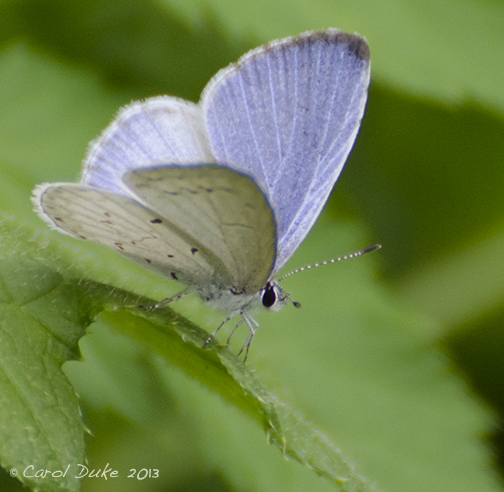






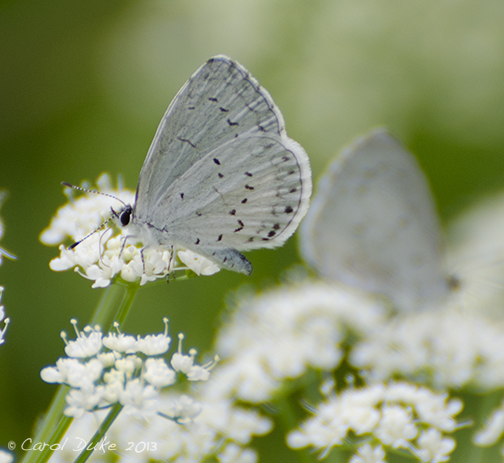









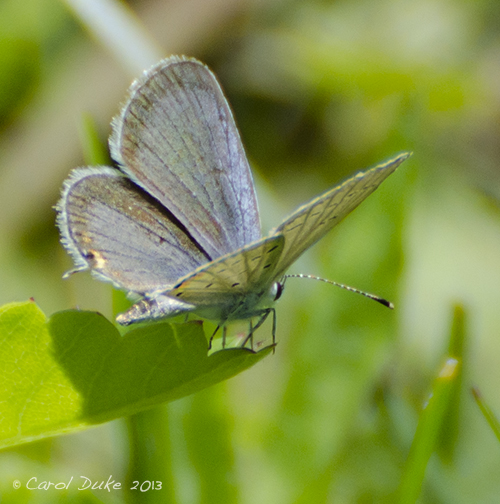

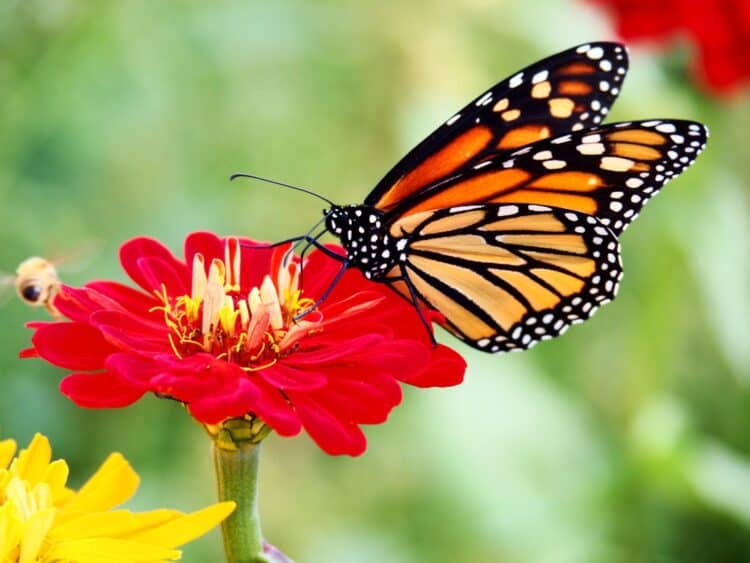
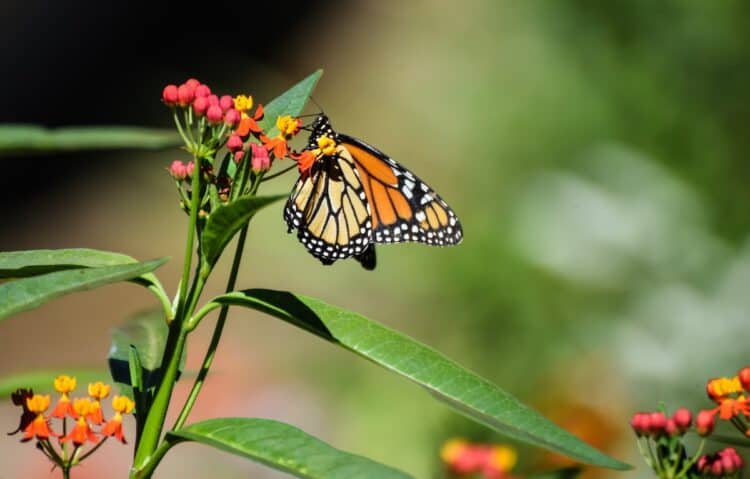
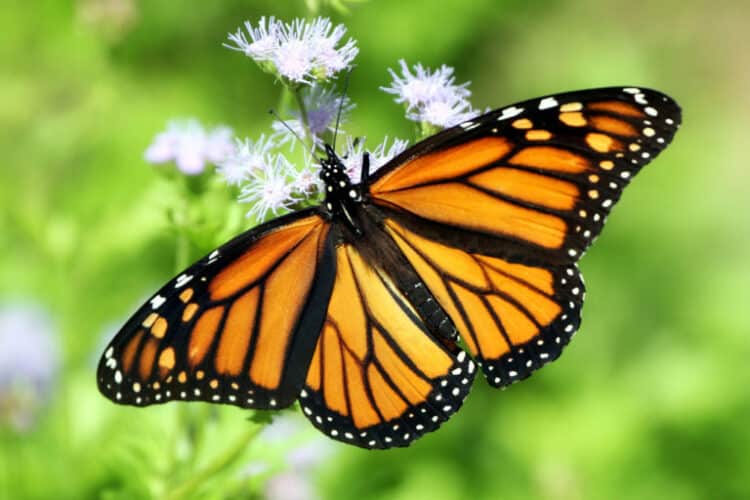
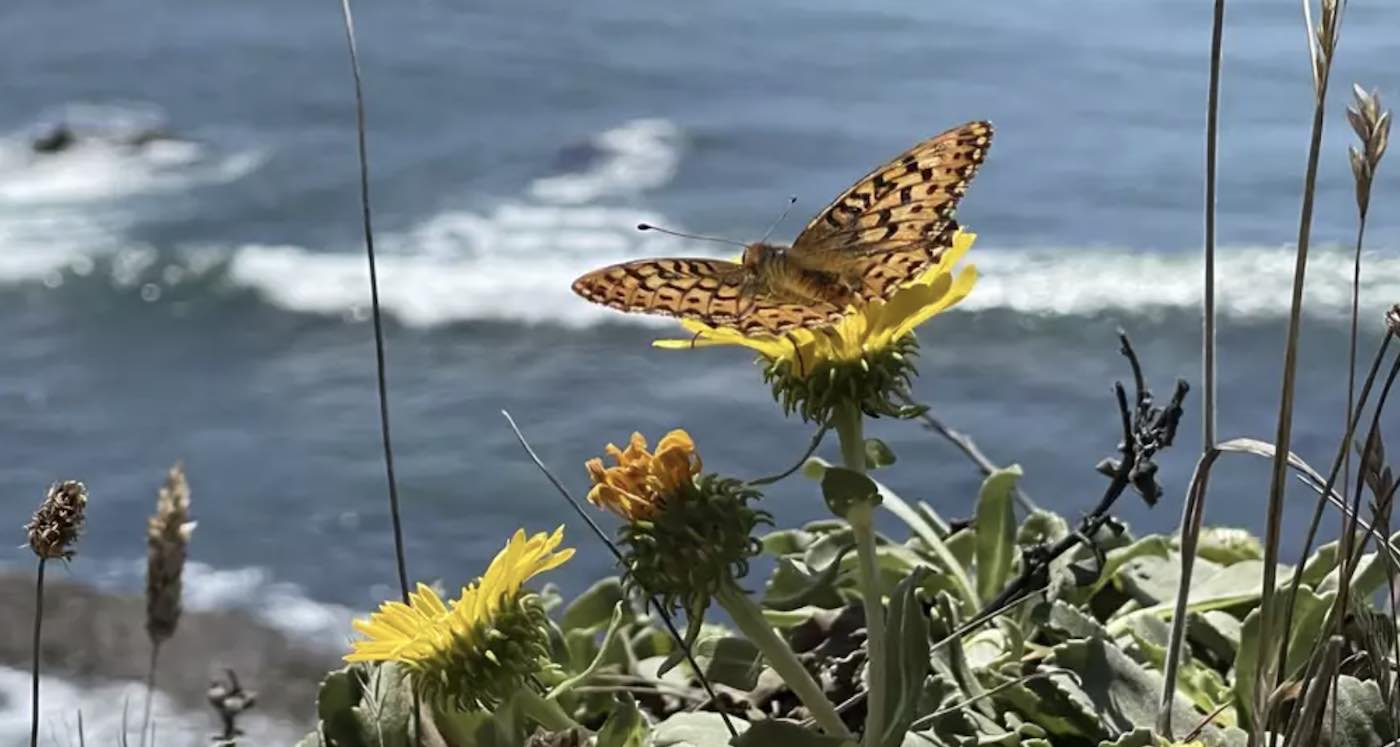

Leave a Reply